7 Superfoods You Can Easily Grow In Your Home Or Garden
Don’t splash out on expensive superfoods at the grocery store – discover the most nutrient-dense vegetables that even beginner gardeners can grow with minimum fuss.
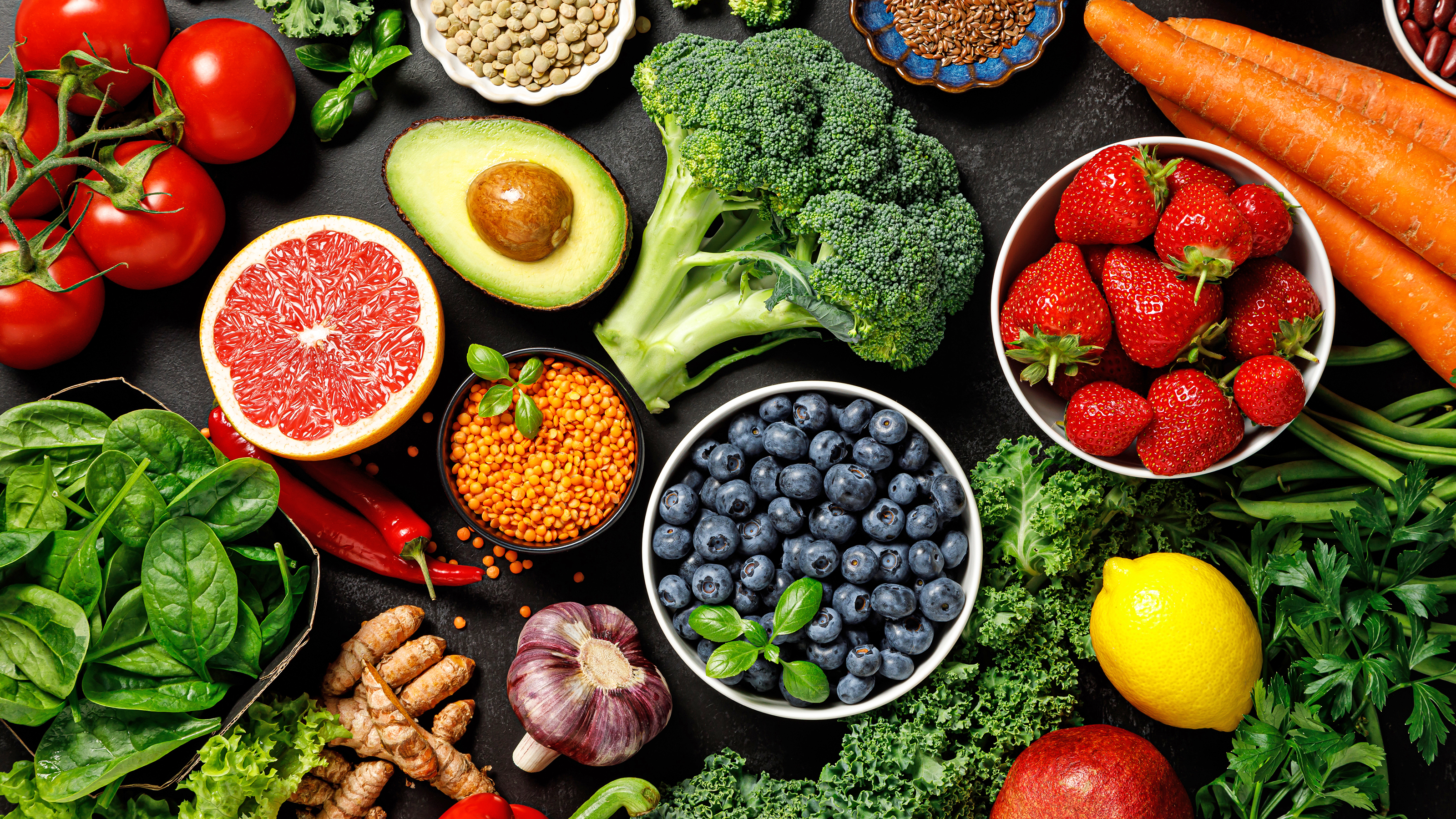

For those of us wanting to improve our health, the idea of eating superfoods is highly appealing.
"Superfoods" are ingredients that are particularly dense in nutrients. To be worthy of this elevated status, an ingredient must deliver several health benefits – such as containing high levels of antioxidants, contributing to improved gut or heart health, and even potentially reducing the risk of certain cancers.
So often superfoods are considered exotic ingredients that are expensive to buy at the grocery store. However, many can be grown in your home or yard.
Just growing your own vegetables, herbs, and fruits means they can be organic and eaten within hours of being harvested – which boosts the health benefits of every crop you grow.
Here, we reveal seven superfoods that even beginner gardeners can grow with minimal effort.
1. Ginger

Once you start to grow your own ginger, you will never look back. It’s a low-maintenance crop that thrives in partial shade, so grows very well indoors.
Yet, the root is absolutely brimming with health benefits. A natural nausea reliever, it helps with symptoms of morning sickness, and also eases symptoms of bloating and gas. It’s packed with anti-inflammatory properties, and contains antioxidants that help to mimimize cell damage.
Gardening tips, videos, info and more delivered right to your inbox!
Sign up for the Gardening Know How newsletter today and receive a free copy of our e-book "How to Grow Delicious Tomatoes".
There is also evidence that ginger contributes towards heart health, lower blood pressure, and lower blood sugar.
All you need to grow ginger at home is a piece of the root – which you can get from the grocery store – and a container filled with potting soil.
Ensure you use a healthy-looking piece of root around 4 to 5 inches (12-15cm) long with a few “fingers”.
Break or cut off a finger that is 1 to 2 inches (2.5-5cm) long and has at least one bud on it. Allow it to dry for a day or two in a warm, dry place. Then plant in a shallow trench, no deeper than 1 inch (2.5cm).
Water thoroughly, then only sparingly once the soil dries out.
It will take around 10 months for your plants to mature, so consider succession planting a crop on your kitchen windowsill, to keep you in steady supply.
2. Microgreens
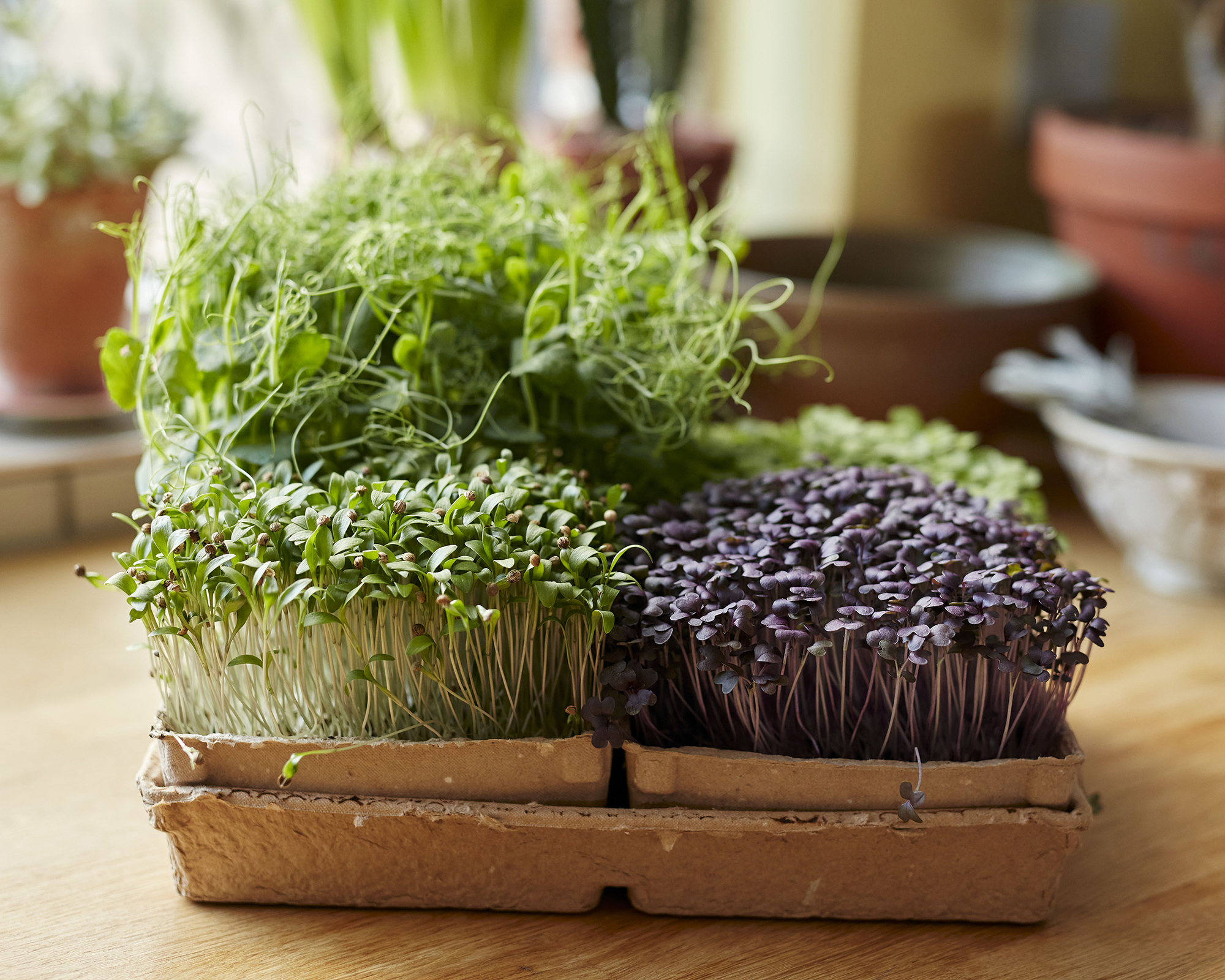
Microgreens are baby herbs and vegetables that are harvested while they are still tiny seedlings. They make a lovely addition to salads and sandwiches, and can also be used as a garnish to main meals.
These flavorsome seedlings are packed with nutrients, containing more concentrated doses of vitamins, minerals, and antioxidants than fully grown vegetables.
Microgreens contribute to improved gut health, lower cholesterol, lower blood pressure, and could potentially help to ease chronic diseases.
The good news is that growing them at home couldn’t be easier – or quicker. All you need is a seed tray filled with fine compost, and a packet of your chosen seeds.
Salad leaves are the easiest microgreens to grow, but also try herbs such as basil, cilantro, and parsley, or vegetables such as broccoli, carrots, beets, corn, and peas.
You can use up leftover seed, but if you want to grow microgreens regularly, then it’s more cost-effective to purchase seed in bulk.
Sow your seeds thickly across the soil, cover with a fine layer of compost, then lightly water until damp.
Position the tray on a bright windowsill. Adding a plastic lid or bag to your tray will help the compost to retain moisture and speed up the process.
You can harvest your seedlings with scissors when they are 1-2” tall, which could take a few days or a few weeks.
3. Kale
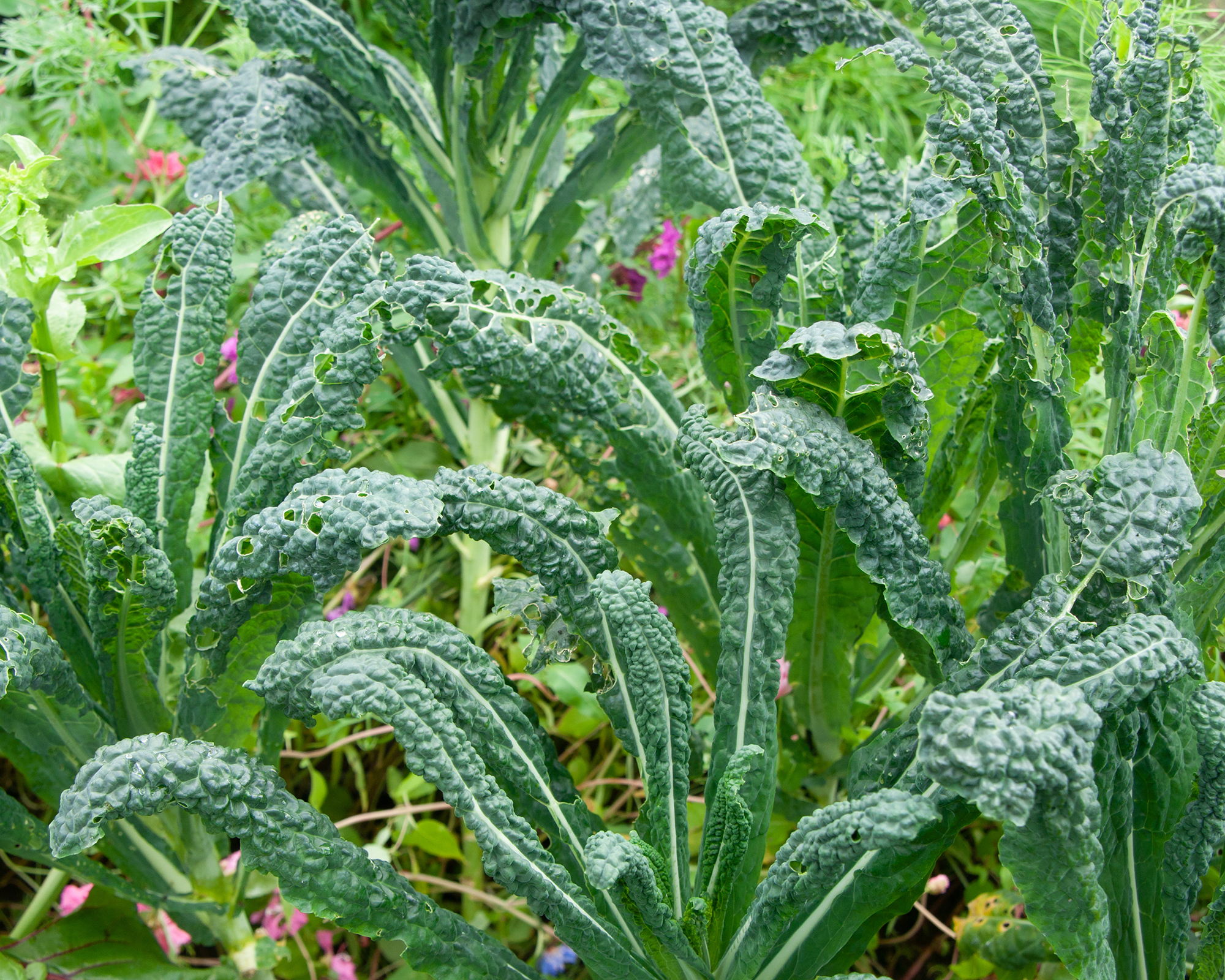
Kale is a superstar of the vegetable garden. The leafy crop contains four times the vitamin C content and twice the selenium content of spinach (another superfood you can grow), and is also packed with other nutrients such as vitamin K, vitamin E, iron, calcium, and beta-carotene.
It supports the immune system, contributes to eye health, helps to regulate blood pressure, and could potentially reduce the risk of certain cancers.
Growing kale is easy. The plants are robust and adaptable, and can even grow in winter. You can plant kale in pretty much any soil type, though it prefers a sunny spot in well-drained soil.
Kale grows best when planted after the soil reaches temperatures of 60 to 65°F (16-18°C), although it doesn’t do well in high heat.
Growing kale is simple, and plants take only about two months to mature. Start the plants indoors to get an early start on the growing season.
Fill pots or seed trays with potting soil, scatter seeds, and cover with half an inch of soil. Keep moist to germinate.
After all chance of frost has passed, transplant the seedlings into the ground.
4. Sweet potatoes
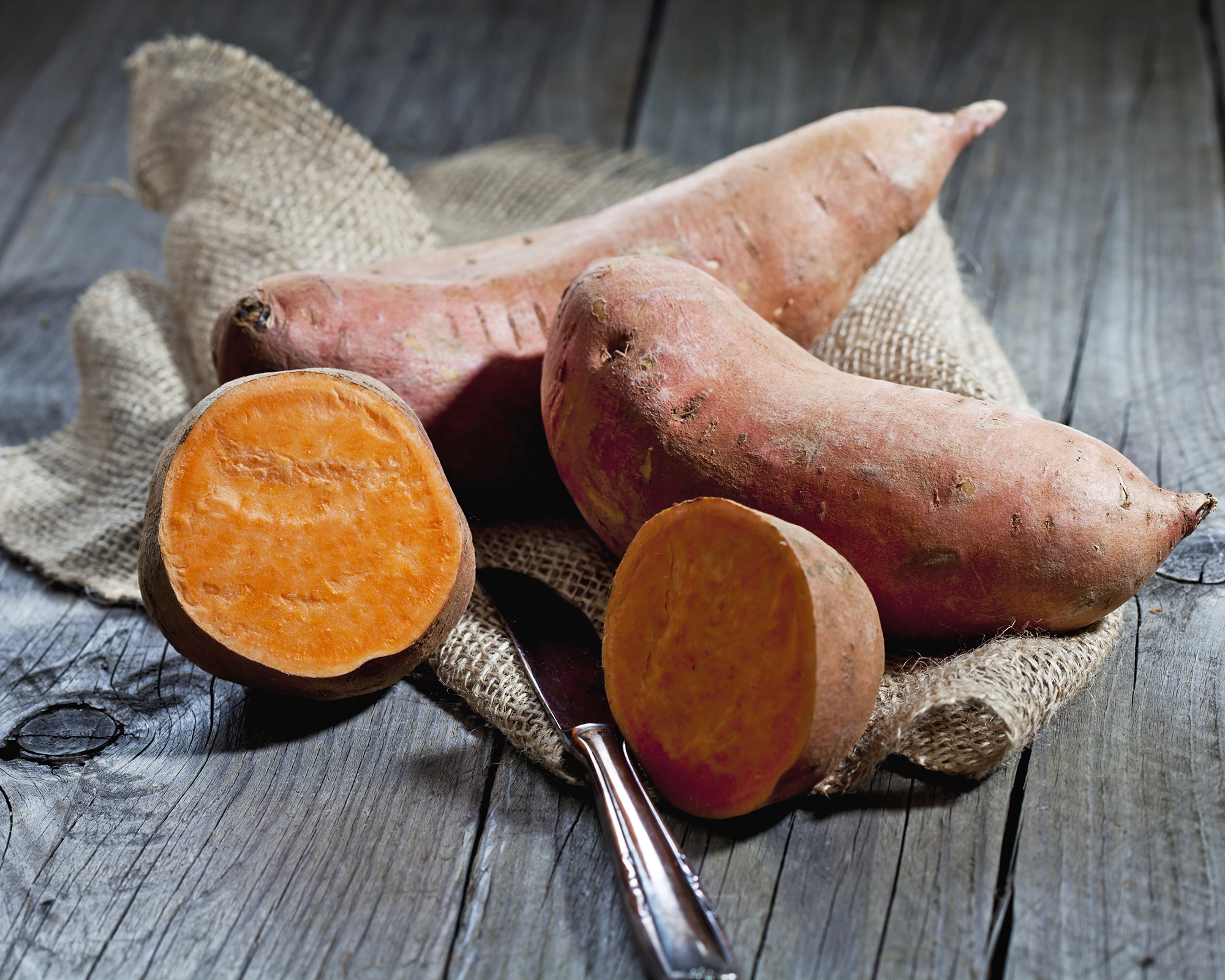
As well as being packed with vitamins, sweet potatoes are rich in carotenoids, which are powerful antioxidants – helping to reduce cell damage. The delicious vegetables are also known to help balance blood sugar levels and promote good gut health.
While orange sweet potatoes are most common, purple sweet potatoes have been found to have anti-cancer properties.
If you live in a warmer USDA zone (9-11), then you will find growing sweet potatoes is very straightforward. However, with a little effort they can still be grown in cooler zones as long as you have a period of at least 120 frost-free days.
Sweet potatoes require the soil temperature to be kept at 70 to 80°F (21-26°C). They should be started in mid-summer, otherwise the soil won't be warm enough for them to thrive.
Unlike regular potatoes, sweet potatoes grow on vines, starting out with "slips" – which are small pieces of potato tubers.
Once they are planted, sweet potatoes require minimal intervention – just keep an eye on weeds – and only take six weeks to be ready to harvest.
5. Beets
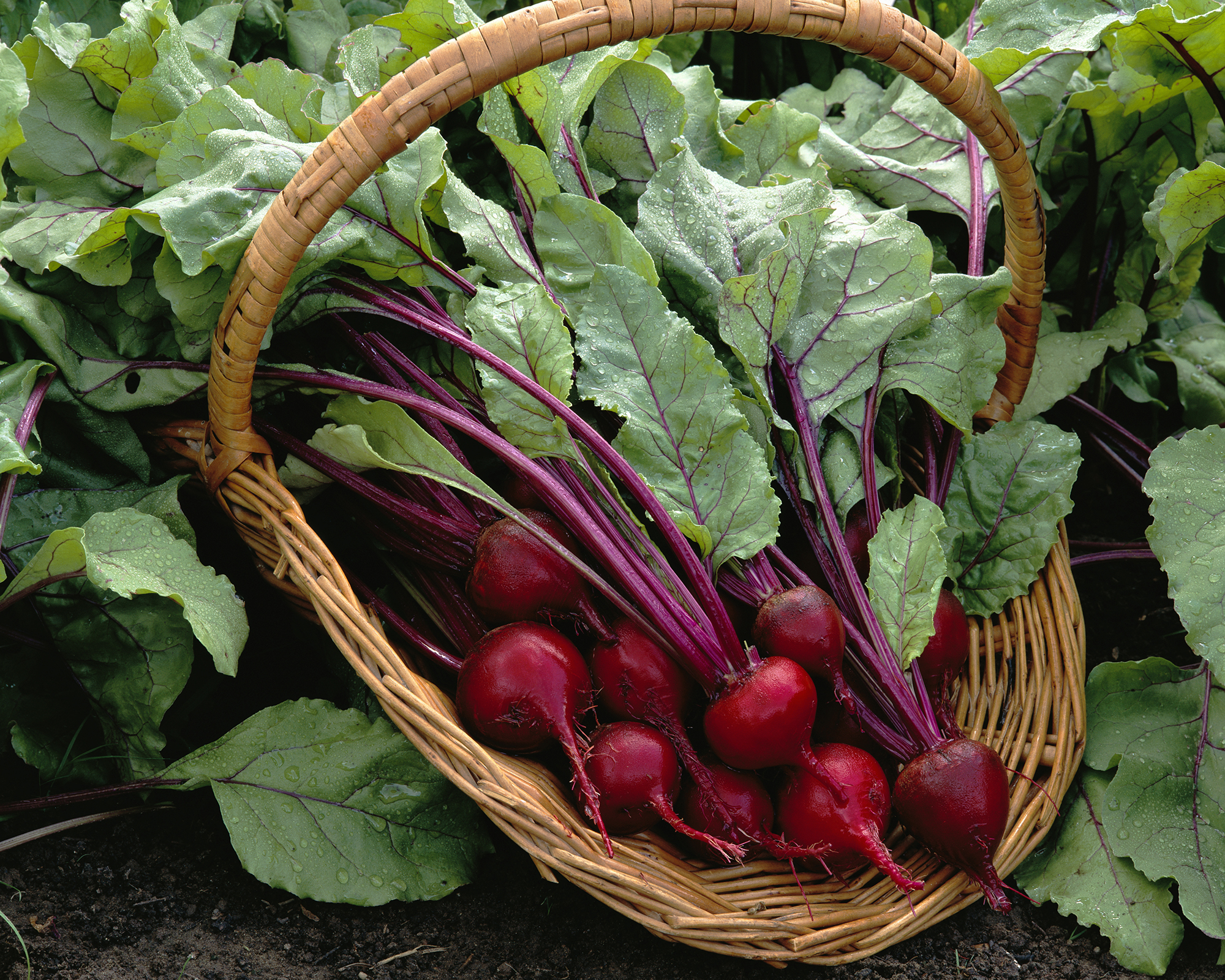
Loaded with essential vitamins, beets are also powerful antioxidants, and have anti-inflammatory properties. In addition, red varieties contain the cancer-fighting compound betacyanin.
Not only is growing beets easy for beginners, but they are a fantastic space-saving crop – use them to fill in gaps in the garden so that no square inch is wasted.
Beets do not do well in the high heat of the summer. They are a cool weather crop, and can be grown all winter long in many southern states. In northern soils, beets shouldn't be planted until the temperature of the soil is at least 40°F (4°C).
Plant seeds 1 to 2 inches (2.5-5cm) apart in rows; cover lightly with loose soil, and then water.
Seedlings should sprout in a week or two, and the beets should be ready in seven to eight weeks.
As well as the delicious roots, the greens can also be harvested and enjoyed.
If you want to mix things up on the veg plot, then Swiss chard is another superfood related to beets that has similar growing requirements.
6. Garlic
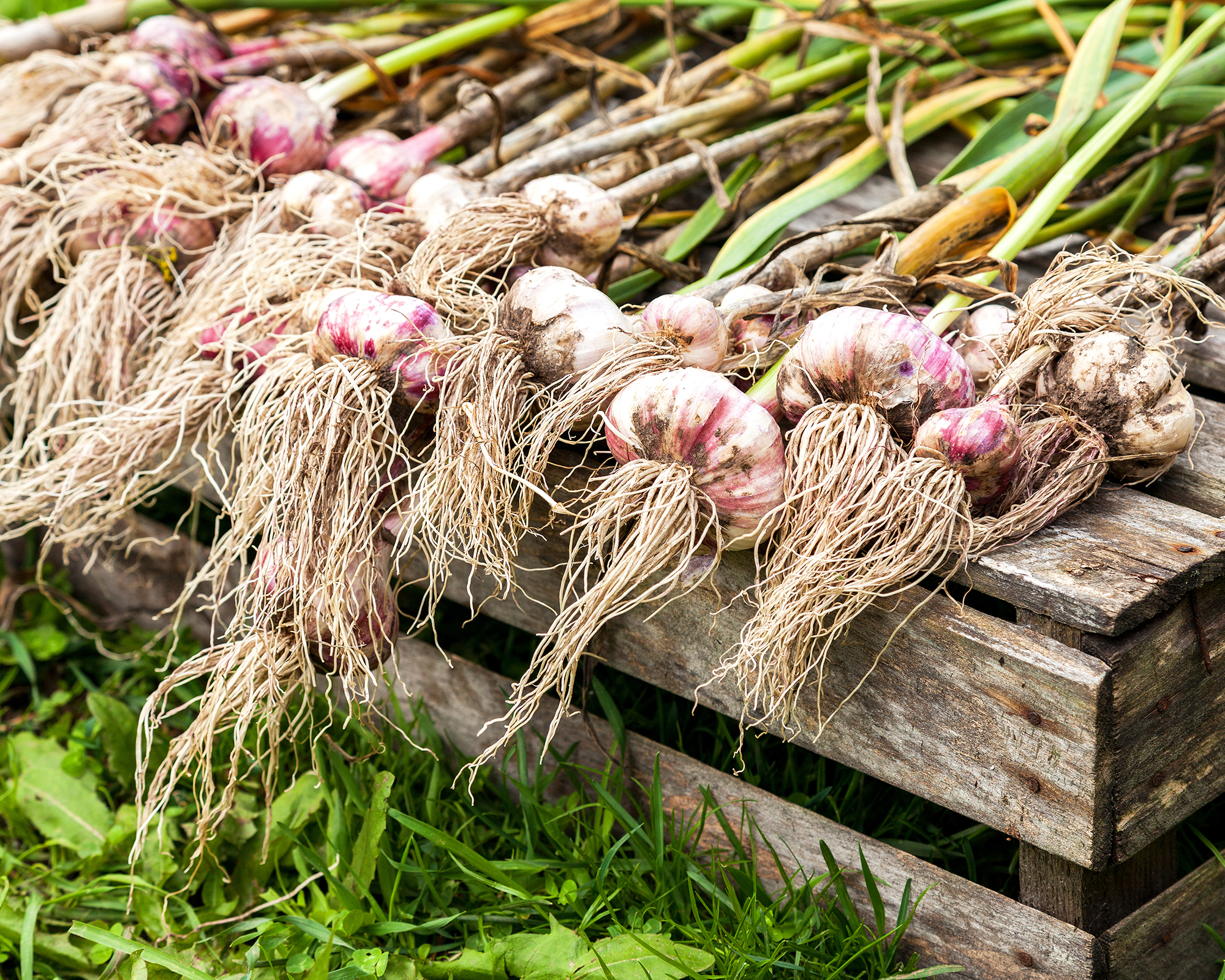
As well as being a most delicious flavoring, garlic is a nutritious superfood. It has strong antioxidant, anti-inflammatory, anti-microbial, and other healing properties that may help to fight heart disease and even cancer.
Garlic couldn’t be easier to grow – though it does take around nine months. The good news is you can pretty much plant and forget.
It needs cool temperatures, so plant in the fall, four to six weeks before the ground freezes.
In milder winter areas, plant garlic through winter but before February.
All you need to do is plant individual garlic cloves about an inch (2.5 cm) deep, with the fatter end at the bottom of the hole. Space cloves 2 to 4 inches (5-10 cm) apart.
Fertilize occasionally, and your garlic is ready to harvest once the plant’s leaves turn brown.
7. Tomatoes
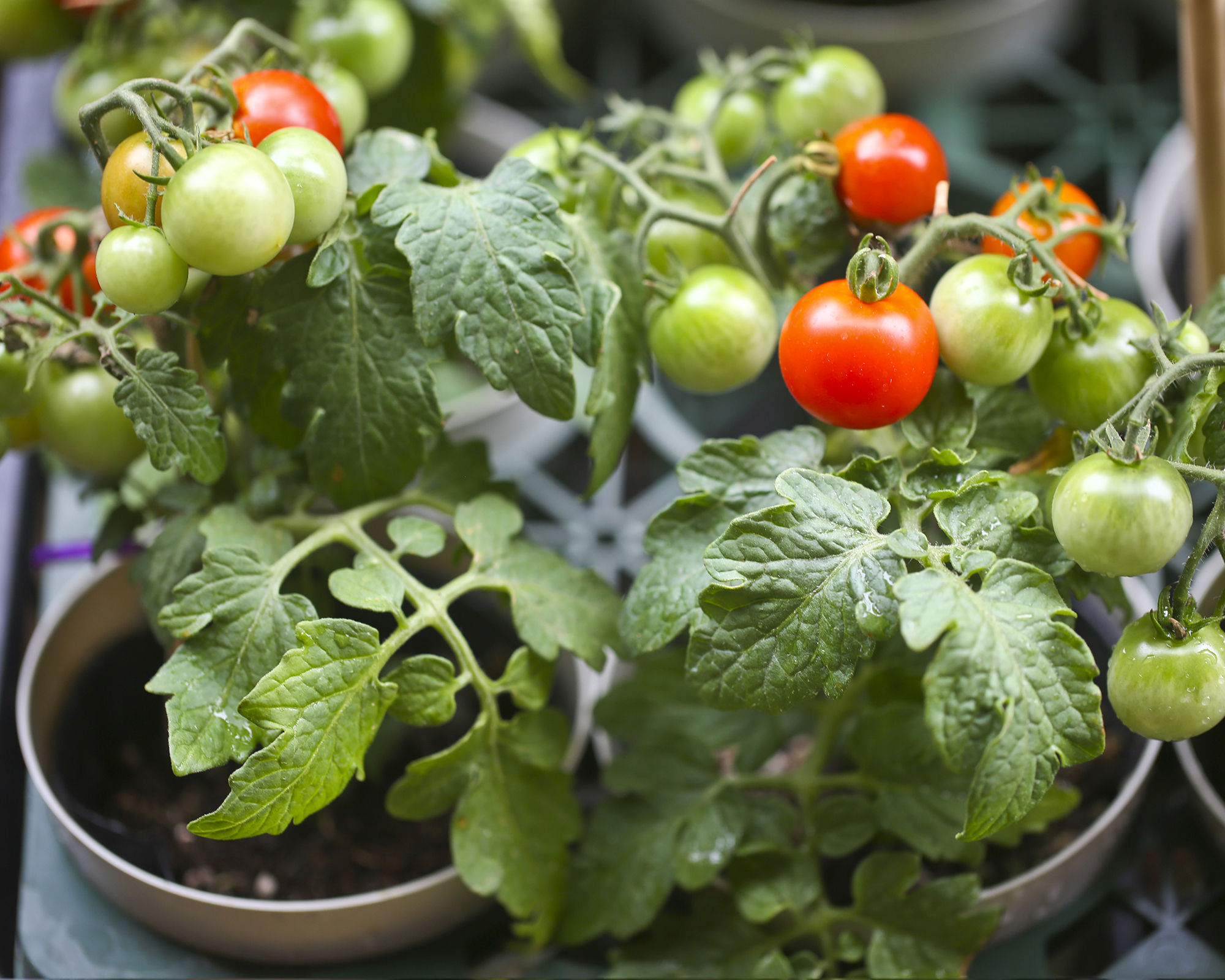
Growing tomatoes is one of the most popular options for beginner gardeners. Yet they’re one of the most potent superfoods – packed with vitamins, antioxidants, and carotenoids including lycopene, lutein and beta-carotene.
Tomatoes have been linked to improved heart, eye, and brain health, as well as cancer prevention.
The key to a successful crop is to choose a variety suited to your individual preferences, growing space, and hardiness zone.
Cherry tomatoes are easy to grow and mature quite early. They are a pleasure to eat on the go and grow well in containers.
Heirloom tomatoes are another popular option, as they have a long heritage and tend to do well in certain areas.
You can opt to grow tomatoes from seeds or seedlings. The soil should comprise plenty of organic matter, usually compost, and the plants require plenty of fertilizer and moisture.
Seeds take six to eight weeks of growing and must be hardened off before they are transplanted into the garden.
Tomatoes need full sun and protection from the wind – you should stake them for further support. They don’t thrive in cool conditions and require an average temperature of 65°F (18°C) or higher to ripen.

Melanie is an experienced gardener and has worked in homes and gardens media for over 20 years. She previously served as Editor on Period Living magazine, and worked for Homes & Gardens, Gardening Etc, Real Homes, and Homebuilding & Renovating. Melanie has spent the last few years transforming her own garden, which is constantly evolving as a work in progress. She is also a passionate organic home grower, having experimented with almost every type of vegetable at some point. In her home, Melanie tends to an extensive houseplant collection and is particularly fond of orchids.
-
 Looking For Plants To Give You The Soft And Fuzzies? Try These 5 Fuzzy Leaf Plant Options
Looking For Plants To Give You The Soft And Fuzzies? Try These 5 Fuzzy Leaf Plant OptionsLovers of texture, drama, silver foliage and tactile plants will adore these special sensory garden additions. These fuzzy leaf plant options will leave you all aglow
By Susan Albert
-
 Get Ready For A Summer Of Hummers! Grow These Full Sun Hummingbird Plants and Flowers
Get Ready For A Summer Of Hummers! Grow These Full Sun Hummingbird Plants and FlowersIf you’re lucky enough to enjoy a sunny backyard, make sure you are maxing out on your pollinator opportunities and grow these full sun hummingbird plants and flowers
By Tonya Barnett